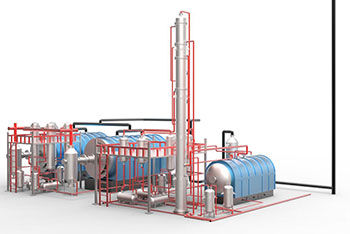1 Biodiesel as a long-term energy strategy focus, development is sustainable

Compared with traditional diesel, biodiesel has the advantages of good lubrication performance, safe storage, transportation, safe use, good explosion resistance and sufficient combustion. In recent years, with the continuous rise of international crude oil prices and the tightening of resources, oil supply pressure has increased unprecedentedly, and the economic and environmental significance of biodiesel has become increasingly apparent. The development and promotion of biodiesel will be a long-term energy source. strategic focus. The main producing countries of the biodiesel industry such as the European Union, the United States, and Argentina, as well as Malaysia, Indonesia, Thailand, and Brazil have developed their own biodiesel development plans, and have begun commercial production or construction of production facilities. As conversion technologies improve, there will be more and more types of biomass feedstocks for biodiesel production. Therefore, countries with high crop yields and low land and labor costs will have enormous potential for development.
(more information about biodisesl,pls click)
2 As the key to the development of biodiesel industry, science and technology focus on innovation
The scientific and technological factors are the core factors that restrict the development of biodiesel. In the future, the development direction of biodiesel is to increase the research and development of bio-energy conversion technology and improve the technical standards of biodiesel production, so as to achieve cost reduction and quality improvement. The production countries have increased investment in scientific research, established professional research institutions, and closely carried out international technical exchanges and cooperation, continuously improved technological innovation capabilities, strengthened research and development of core technologies, and promoted the rapid development of biodiesel in the world. At present, the key task of focusing on the second generation of biofuels in many countries in the world is the development of high-efficiency cellulose-converting enzyme preparations, key technical equipment for producing cellulose fuel ethanol, and the problem of reducing costs and improving efficiency.
3 As the foundation of the biodiesel industry, raw materials are diversified
At present, the raw materials for the production of biofuels in the world are mainly soybeans, rapeseed and the like. This requires the use of vast land areas to expand planting and land for food. Even so, biodiesel is still limited by the amount of resources, and the pressure on raw materials has increased, resulting in higher costs, the company’s profit margins have gradually narrowed, and some companies have suffered losses or even went bankrupt. Therefore, taking the road of diversification of raw materials is a long-term strategy. On the one hand, according to the actual situation of the country, make full use of and develop all kinds of possible raw materials; on the other hand, open up barren hills and wasteland and “marginal land” such as saline-alkali land, sandy land, mines and oilfield reclamation land, and improve the utilization of land and resources. It also cultivates and develops various energy crops, thereby reducing production costs and promoting the comprehensive promotion of biodiesel.
4 As a condition for the development of biodiesel industry, support measures are long-term
Governments not only provide a series of financial incentives, investment policies, tax incentives, user subsidies and other economic incentives to provide better support for the development of the biomass energy industry, but also ensure long-term sustainable development of bioenergy through planning and government directives. . For example, the United States issued a presidential decree on “development of bio-based products and bioenergy” as early as August 1999, identifying targets for bio-based products and bioenergy growth in the United States by 2010 and 2020, and replacing biofuels with fuel oil. Amount of indicators. Brazil launched the “Bioenergy Plan” and the “National Implementation of the Development of Fuel Ethanol Production Plan” to enforce the “patriotic gasoline” using bioethanol in legal form. Countries have promoted the long-term development and promotion of biofuels through the establishment of policy implementation mechanisms.
5 Biofuel production and consumption are included in the legal track to achieve legalization of safeguards
To date, the world’s major bioenergy producers have developed a series of laws and regulations to promote their production, sales and use. Legislation has determined the unshakable nature of the strategic position of renewable bioenergy; it has ensured the stability of the development of the emerging bioenergy industry; and strengthened the smoothness of bioenergy sales and consumption channels. The US government has issued a number of laws since 2005, including the Energy Policy Act, the Energy Independence and Security Act, and the Renewable Fuel Standard. Japan has also enacted the Law on Special Measures for the Promotion of New Energy Utilization.